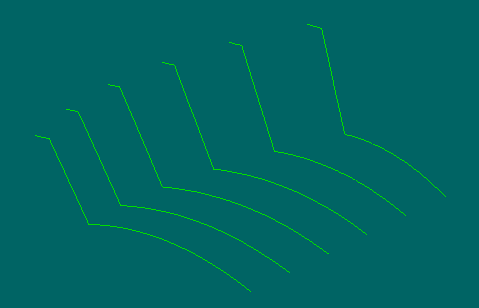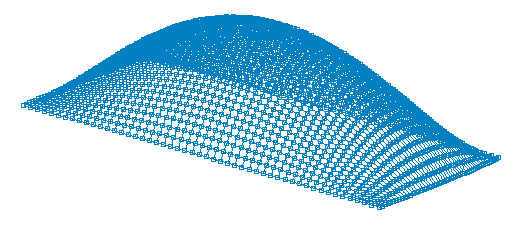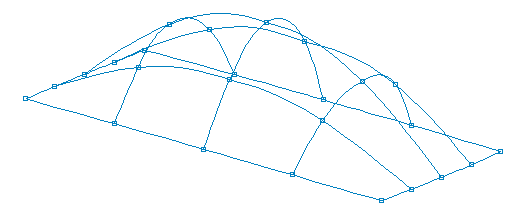Reverse Engineering
Reverse engineering refers to the process of reconstructing 3D models from basic point and polyline input data. (See our white paper on Reverse Engineering for more details.) The raw input data might come from a 2D or 3D digitizer or scanner, or from another program using TXT, DXF, or IGES file formats. Pilot3D can take this raw point, polyline, curve or mesh data and use it to create 3D NURB surfaces. Pilot3D has many commands to fit curves to points and polylines and then use those curves to create one or more NURB surfaces.
Don't spend thousands of dollars on a program to do jobs that can be done very easily with Pilot3D for just $69.95!
Don't spend a lot of money on reverse engineering software where the final result is a 3D model that you can view on the screen, but you can't do anything with. Pilot3D creates a 3D NURB surface model that you can modify, smooth, perform calculations on, and produce construction templates.
See REMTEK, Inc. for using a MicroScribe G2 3D Digitizer with Pilot3D.
For example, the following polyline sections were read in from a DXF file. The polylines were first curvefit between the hard or knuckle points and then fit with 3 NURB surfaces in one step.

The following picture shows the original input curves and the final 3 NURB surfaces that were created.

These surfaces are defined with a minimum number of edit points and are "bonded" together. This means that you can edit their shapes without having the surfaces separate or come apart! It is one thing to be able to fit NURB surfaces to raw input data, but it is much more difficult to do it in a way that allows you to refine or modify the final shape afterwards. Pilot3D gives you ways to reduce the number of points in a curve or polyline or the number of edit rows and columns on a surface.
The following shows an example of reading a mesh entity from a DXF file and automatically fitting it with a NURB surface. Since there are too many rows and columns on the surface to make modifications practical, Pilot3D provides you with a way to reduce the number of edit rows and columns.


Note that Pilot3D uses points that lie ON the surface for editing the shape of the surface. There is no vertex mesh to clutter up the screen and the editing process.
TUTORIALS
1. See this complete reverse engineering example that includes a surface cut-out and the unwrapping of the surface.
2. This tutorial shows you how to create a surface from a boundary curve and unwrap it flat to make a 2D pattern for CNC cutting.
Cloud of Points - Pilot3D can handle the fitting of NURB surfaces to "clouds" of input points. You can snap curves to selected point data to define different regions that can be fit with NURB surfaces. This user-controlled process gives you the best fit in a form that can be edited and modified after the fit is completed.